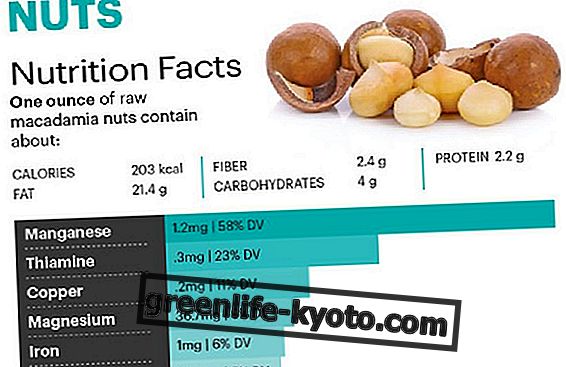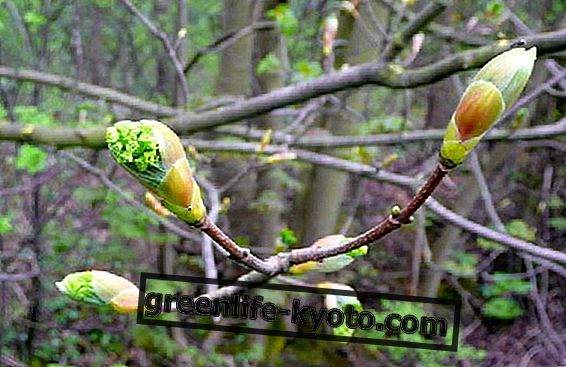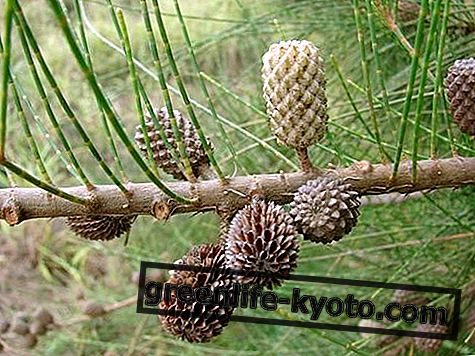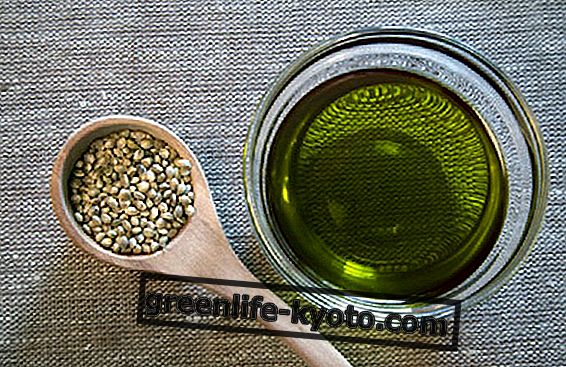
Macadamia nuts are the fruit of the Macadamia tree (Macadamia integrifolia or Macadamia tetraphylla) native to Australia. Known for their content of manganese, vitamins, and antioxidants, they are among the oil seeds, those with the highest content of monounsaturated fatty acids.
Although almonds are considered to be America's most popular nuts, no one can deny the delicious appeal of macadamia nuts . This aspect of macadamia nuts is really important, because, just like almonds, the nutritional values of macadamia nuts also have a powerful beneficial effect.
Macadamia nuts are small nourishing powers that come from the macadamia tree. They contain some important essential vitamins and minerals, such as vitamin A, iron, B vitamins, manganese and folic acid, as well as proteins, healthy fats and antioxidants. These remarkable nutrients give these incredible nuts their many benefits. What benefits? I'm glad you asked me.
The advantages of macadamia nuts
1. They are good for the heart
Macadamia nuts contain healthy fats that can help keep arteries healthy. Because they are rich in monounsaturated fatty acids, they help reduce cholesterol levels and lower triglycerides, a type of body fat. When we reduce body fat, we can reduce the risk of coronary heart disease.
In a study conducted by the Pennsylvania State University Department of Nutritional Sciences and published in the Journal of Nutrition, some subjects were randomly given macadamia nuts and compared with others who followed a standard American diet.
During the study, those who consumed macadamia nuts saw their cholesterol levels reduced and found overall healthier cardiac markers. Because macadamia nuts are a rich source of monounsaturated fatty acids, these help reduce the risk factors for cardiovascular disease.
2. They help against diseases
Macadamia nuts contain flavonoids that help prevent cell damage by protecting them from environmental toxins. Once these flavonoids are circulating in the body, they convert into antioxidants, and this is where their potency comes into play. Antioxidants carry out the important task of finding free radicals in our body and destroying them. This is how they protect the body from disease.
" Research suggests that the consumption of nuts is inversely associated with the incidence of cardiovascular diseases and cancer." Research studies by the Antioxidants Research Lab of the Tuft's University's Jean Mayer USDA Human Nutrition Research Center on Aging
In addition to being rich in nutrients, macadamia nuts also contain numerous phytonutrients that are beneficial to health. Phenolic acids, flavonoids and stilbenes help provide useful antioxidants to combat many diseases such as cancer. This is why walnuts - including macadamia nuts - are some of the best food products that can be used against cancer .
3. Useful for weight loss
The high fat content can actually help reduce appetite . Not only that, macadamia nuts also contain palmitoleic acid. Palmitoleic acid has the ability to speed up fat metabolism, reducing its accumulation. Macadamia nuts have a good balance between nutrients and fats, and help you feel full only with some of them.
Furthermore, macadamia nuts contain beneficial dietary fibers that can help achieve satiety and contain complex carbohydrates such as lignans, hemicellulose, amylopectins, mucilages, gums and insoluble cellulose that help against digestive problems, reducing those annoying hunger pangs.
There is also evidence that nuts, such as macadamia nuts, can have positive effects to prevent the metabolic syndrome, although further research is needed to validate this hypothesis.
4. They support the intestine
Containing soluble and insoluble dietary fiber, macadamia nuts help you feel full while eliminating toxins from the body and aiding digestion. Being a food rich in copper, macadamia nuts help using iron efficiently and promoting appropriate enzymatic reactions.
5. Strengthen the bones
Macadamia nuts are rich in phosphorus, manganese and magnesium, which help the digestion of teeth and bones, transport and absorption of nutrients.
We know that calcium helps in the formation of bones and teeth, while manganese helps the body deposit new bone where needed, so that bones stay strong when we get older.
Another important factor concerns kidney diseases that hinder the body's natural ability to absorb calcium and manganese, leading to bone diseases. Then the manganese present in macadamia nuts can really help keep bones strong and at the same time fight kidney disease.
6. Keep the brain and nervous system healthy
The copper, vitamin B1, magnesium and manganese found in macadamia nuts help make neurotransmitters healthy, because they are important chemicals our brain cells need to send signals to the brain.
Macadamia nuts are also rich in oleic acid, which helps keep the brain healthy, and palmitoleic acid, which helps protect nerve cells.
Furthermore, macadamia nuts contain omega-9, which, as we know, are beneficial to the brain in many ways. To begin with, they help improve mood, an explicit function of the brain. Furthermore, they can help improve memory and prevent neurological diseases.
For example, in some scientific studies conducted on memory performance of common mice and published in Pharmacology, Biochemistry and Behavior they have shown that erucic acid can be a therapeutic agent for diseases associated with cognitive deficits, such as Alzheimer's disease .
This means that it is possible to add memory enhancement and cognitive function improvement to the list of benefits of omega-9 and thus the benefits of macadamia nuts.
7. Reduce chronic inflammation and arthritis symptoms
Omega-6 fatty acids can provide some nutritional benefits, but many consume too many. When we have too many omega-6 fatty acids, these can cause and increase chronic inflammation in the body. This is a problematic factor because we know that inflammation is the basis of most diseases, such as arthritis, cancer, heart disease, diabetes and more.
A study published in Pharmacognosy Magazine analyzed the capacity of a group of Australian plants, including the macadamia tree, which had a history in the treatment of rheumatoid arthritis, reaching the positive conclusion on their real utility. The researchers noted that the "low toxicity of these extracts and their inhibitory bioactivity against Proteus spp. ( See note 1. at the end of the article ) would indicate their potential in blocking the onset of rheumatoid arthritis ." This means that macadamia nuts they are a good addition to the arthritis diet.
Most nuts have far more omega-6s than omega-3s, but macadamia nuts are among the nuts with the lowest omega-6 content. This does not mean that you can overdo it with macadamia nuts, but by monitoring the intake of omega-6 fatty acids and taking some macadamia nut every week, you can add protein, fiber, vitamins and minerals to your diet without taking too many omega -6, which cause inflammation .
To give you an idea of the differences, pecans contain 3.7 grams of omega-6 per 100 grams, almonds 3.4 grams and cashews 2.2 grams compared to macadamia nuts which contain 0.36 grams of omega -6 per 100 g total .
Nutritional values of macadamia nuts
Although macadamia nuts are richer than other oilseeds in fat and calories, the amount of omega-6, as mentioned above, is lower. Macadamia nuts also contain an impressive amount of nutrients, in particular they contain 58 percent of the recommended daily requirement of manganese in a small portion.
An ounce ( see note 2. at the end of the article ) of macadamia nuts contains:
- 203 calories
- 4 grams of carbohydrates
- 2.2 grams of protein
- 21.4 grams of fat
- 2.4 grams of fiber
- 1.2 mg of manganese
- 0.3 milligrams of thiamine
- 0.2 milligrams of copper
- 36.7 milligrams of magnesium
- 1 milligram of iron
- 53.1 milligrams of phosphorus
- 0.1 milligrams of vitamin B6
Origin and history of macadamia nuts
Macadamia nuts are contained within a hard seed that is enclosed in a green shell. When the nut is ripe, it breaks. The macadamia tree is probably best known as a native of Hawaii, but did you know that two seedlings were planted in 1800 on the Berkeley campus of the University of California and that they are still standing today? It's true! However, the macadamia tree is actually native to Australia.
Macadamia nut has a white and creamy kernel composed of 65-75% oil and 6-8% sugar . Following roasting, it becomes more consistent both in color and texture. The coating of some seeds is smooth, while for others it is more rough. At the same time, some are better suited for cultivation in the backyard while others are more suitable for commercial production.
You may have heard of macadamia nut also as Mauna Loa . Mauna Loa is actually the largest volcano on earth in Hawaii, and Mauna Loa, now a brand, has become one of the first macadamia plantations to have developed in Hawaii.
In addition to being called macadamia, these nuts are also known as Australian nuts and Queensland nuts . Many species are poisonous - however, there are two edible species. One is macadamia with a smooth surface or Macadamia integrifolia, and the other is macadamia with a rough surface, or Macadamia tetraphylla .
Macadamia nuts grow near rivers and on river banks in rainforests . Macadamia integrifolia is native to south-eastern Queensland, while M. tetraphylla is native to both the south-east of Queensland and the north-eastern region of New South Wales. At the point where the two species meet, macadamia trees grow that appear to be natural hybrids.
The macadamia tree arrived in Hawaii around 1881, mainly used as an ornamental plant and for reforestation. In 1948 the Hawaii Agricultural Experiment Station gave its name and introduced several promising selections, which then led to the modern macadamia industry for which the Hawaiian islands are famous.
From Hawaii, the macadamia tree arrived in California during the first half of 1900. Australia, South Africa and Central America also depend on the value of macadamia nuts. Macadamia trees prefer a mild climate, sheltered from frost and heavy rainfall, as well as coffee beans.
How to store and roast macadamia nuts
Be sure to store macadamia nuts in a cool place, such as the fridge or pantry. Furthermore, it is important to make sure they do not contain moisture.
If you prefer roasted macadamia nuts, here's how to prepare them:
- Preheat the oven to 225-250 degrees F.
- Place the walnuts (the part that is actually edible, not the wraps) on a sheet of baking paper. It is better to roast pieces that are similar in terms of size and texture.
- Simply let it roast for about 10 minutes, checking them because oven temperatures may vary.
- Remove from the oven as soon as they start to become brownish.
- Allow to cool.
- Store in a tightly sealed container.
Recipes with macadamia nuts
There are many ways that you can incorporate macadamia nuts into your diet. It is possible, of course, by eating them alone, but they are perfect additions to many recipes. Here's one to get started:
Cheesecake with macadamia nuts and blueberries without milk
Ingredients for the base
- 1 cup of almonds
- 1/2 cup of pitted Medjool dates
- 1 tablespoon of honey
- 1/2 cup of dried coconut
- 1/4 teaspoon of vanilla extract
- Pinch of salt
Ingredients for the filling
- 2 cups of macadamia nuts
- 1/3 cup of melted coconut oil
- 4 tablespoons of maple syrup or coconut nectar
- 1 teaspoon of vanilla extract
- 1 cup of organic frozen blueberries
Method
- In a food processor or high-power blender, work together with almonds, dates, vanilla, salt and coconut until the desired consistency is achieved. For a creamier consistency, work longer.
- Toast the dried coconut lightly on the stove, being very careful not to burn it. Just toast it until it turns golden brown and then turn off the heat.
- Sprinkle the bottom of a hinged mold with 1 tablespoon of desiccated coconut, then add the prepared mixture and press it evenly into the base.
- Using a high power blender, combine the filling ingredients (save a couple of blueberries to garnish) and blend until it is completely emulsified.
- With the help of a spoon pour the mixture into the prepared pan. Once filled the mold, level with the help of a spatula.
- Refrigerate for 6-8 hours until it becomes solid.
- Garnish with the cranberries kept aside and serve.
Precautions in taking macadamia nuts
Macadamia nuts are, without a doubt, a healthy and delicious choice but it is important to check the portions. Keep an eye on the ingredients when you buy them as many nuts are prepared with preservatives, oils and tons of salt.
Macadamia nuts are also rich in phosphorus, which is important to keep in mind for all those suffering from kidney problems.
Also, pay attention to nut allergies, which are very common. If you are allergic to nuts, macadamias should be avoided.
Final considerations on macadamia nuts
Macadamia nuts contain some important essential vitamins and minerals, such as vitamin A, iron, B vitamins, folic acid and manganese, as well as proteins, healthy fats and antioxidants.
These nuts have been shown to be useful for heart health and to fight diseases like foods rich in antioxidants, help to lose weight, help the intestine, strengthen bones, brain and nervous system, reduce chronic inflammation and they cure arthritis.
It is important to keep macadamia nuts in a cool place, such as the fridge or pantry, and make sure they do not contain moisture. You can also roast them at home.
If you are looking for a healthy, nutritious and satiating snack, look no further.
Source: Macadamia Nuts: The Manganese-Rich Treat that Supports Healthy Bones by Dr. Josh Ax
NOTE
1. Proteus is a genus of bacteria that is part of the Enterobacteriaceae family. The main pathogen of the genus is P. mirabilia isolated in urinary tract infections in elderly patients.
2. Information valid for the United States. The ounce is a sub-multiple of a mass unit of measure (the pound) used in various commercial areas. 1 ounce (oz) equals one sixteenth (1/16) pound (pound) and equals 28.35 grams.














